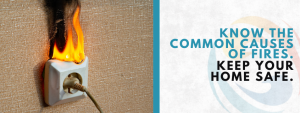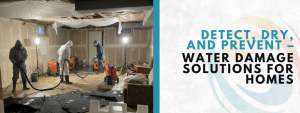
Have you ever walked into your kitchen, only to be greeted by a strange sour smell coming from the wall? You’re not alone. Many homeowners face this puzzling issue, and it’s more than just an unpleasant odor—it could be a sign of a deeper problem that needs attention. When your kitchen wall smells sour, it can make your whole home feel less fresh and inviting. Worse, it might be warning you about something more serious going on behind the scenes.
The kitchen is the heart of the home, but it’s also one of the most moisture-prone spaces. Spills, splashes, steam, and food particles create a perfect environment for hidden troubles. If your kitchen wall smells sour, it’s crucial not to ignore it. Let’s dig into five possible causes and how to check them—all explained in a simple, human way that’s easy to follow.
Water Leaks Behind the Wall
When your kitchen wall smells sour, the first thing to check is for hidden water leaks. Leaks don’t always gush dramatically; sometimes they quietly drip behind drywall or under cabinets for weeks or months before anyone notices. Over time, trapped moisture leads to mold or mildew buildup, which creates that unmistakable sour odor.
Look out for these signs:
- Peeling or bubbling paint
- Soft spots on the wall
- Discoloration (yellow or brown stains)
- Warped baseboards or flooring near the wall
Most kitchen plumbing runs behind walls—pipes from the sink, dishwasher, or even the refrigerator’s water line. When those pipes leak, moisture gets trapped. That’s when bacteria thrive, and when they do, your kitchen wall smells sour more often than not.
Pro tip: Turn off all faucets and appliances that use water. Check your water meter, wait a couple of hours, and check again. If the numbers changed, you may leak.
If you suspect water damage is behind that sour smell, don’t wait—get help restoring your home from hidden moisture.
Mold or Mildew Growth Inside the Wall
Mold doesn’t need standing water to grow. All it takes is a little dampness, some warmth, and darkness—and you’ve got a full-blown problem. When mold builds up inside your wall, it releases musty, sour-smelling gases as it grows. These odors can leak through outlets, vents, or cracks.
How do you know it’s mold?
- Persistent sour smell that worsens after cooking
- Allergy-like symptoms indoors
- Dark spots or fuzzy patches near baseboards
- Increased moisture around windows or cabinets
Here’s a helpful table to understand the difference between mold and mildew in kitchens:
| Feature | Mold | Mildew |
| Color | Black, green, or blue | White, gray, or yellow |
| Texture | Fuzzy or slimy | Powdery or fluffy |
| Smell | Strong, sour, musty | Musty and stale |
| Health Concerns | Respiratory issues, allergies | Mild irritation |
If your kitchen wall smells sour and you spot these signs, mold might be the culprit. You’ll want to act fast. Mold spreads quickly and doesn’t stay in one place for long.
Click here to take steps in clearing dangerous growth from your walls safely.
Rotten Food Debris Behind Cabinets or Appliances
This one might sound simple, but it happens more often than you think. Small food particles, spills, or even forgotten groceries can slip behind appliances or into wall gaps. Over time, they rot and produce that sour stench. If your kitchen wall smells sour but you don’t see signs of mold or leaks, check your surroundings.
Here’s where to look:
- Behind and under the refrigerator
- Inside wall gaps behind the stove
- Between the wall and cabinets
- Under sink basins and pipes
If a small piece of fruit fell behind the fridge a few weeks ago and you forgot about it, it could be causing the whole kitchen to smell off. Even old grease splatters behind the stove can sour and smell over time.
Quick checklist:
- Pull out all appliances and check for residue
- Use a flashlight to scan corners and baseboards
- Look inside cabinets and drawers near the wall
- Sanitize with vinegar or baking soda solutions
Sometimes, cleaning up the area is all you need to fix it. But if you’ve cleaned and your kitchen wall smells sour again in a few days, it may be something deeper.
Sewer Gas or Drain Vent Problems
Your kitchen wall might smell sour due to drain issues, especially if plumbing vents or traps are faulty. Drain vents help balance air pressure in your plumbing system. If they get blocked or if a trap dries out, sewer gases can sneak inside your home—and that often smells like rotten eggs, sour milk, or dirty socks.
Common causes:
- Dry P-trap under the sink
- Clogged air vent on the roof
- Loose drain pipe joints inside the wall
- Sewer line issues
Tip: Run water in all your kitchen drains for 10 seconds. If the smell goes away, a dry trap might be to blame. To prevent this, run water through all drains weekly—even ones you rarely use.
Here’s a short description list to clarify plumbing smells:
- Sour milk smell: Often from decomposing food or sewer gas.
- Egg-like smell: Usually sulfur or sewer gas.
- Musty odor: Mold or damp wood.
- Sharp, chemical odor: Possibly a gas leak—call a professional immediately.
If your kitchen wall smells sour and none of the cleaning or drying helps, your vents or sewer line may need repair. These smells aren’t just gross—they can affect your health and comfort.
See what steps to take when your home has deeper drain or plumbing issues.
Old or Damaged Wall Insulation
Wall insulation isn’t the first thing that comes to mind, but if it gets wet, contaminated by rodents, or simply breaks down over time, it can stink. Especially in older homes, fiberglass insulation or foam can absorb smells like smoke, moisture, or chemicals. Once trapped, they’re tough to get out without removing the wall.
Signs that insulation might be to blame:
- Sour smell appears after rain or humidity
- Insulation particles on the floor or near vents
- Inconsistent temperature on the wall surface
- Noise from inside walls (rodents love insulation)
Here’s an alphabetical list of insulation types and how they respond to moisture:
- Blown-In Cellulose: Absorbs moisture easily, mold-prone
- Fiberglass Batts: Can trap mildew if wet
- Foam Board: Mold-resistant but can still smell musty
- Spray Foam: Generally better sealed, but odors can get trapped during curing
- Mineral Wool: Resistant to fire and mold but holds smell longer
When your kitchen wall smells sour and there’s no visible reason, consider what’s hidden behind. If you live in an older home or had past issues with rodents, replacing insulation might be the only fix.
When to Call a Pro
Sometimes a little cleaning solves the problem, but other times, it’s a much bigger deal. If you’ve cleaned every corner and still your kitchen wall smells sour, it’s likely something out of reach—inside walls, vents, or plumbing.
Look for these red flags:
- Smell keeps coming back after cleaning
- Visible mold or moisture
- Peeling paint or bulging drywall
- Increased allergy symptoms
It’s okay to try things yourself first, but if that sour smell won’t quit, calling a specialist could save you money and stress down the line.
Curious where to start? Check out this helpful resource for home recovery and odor elimination.
Final Thoughts
Nobody wants to live in a home where the kitchen wall smells sour. It’s not just about comfort—it’s about safety, cleanliness, and peace of mind. The five causes listed above are the most common, and each one gives you clues on how to spot it, how to clean it, and when to call in support.
Here’s a final summary checklist for fast troubleshooting:
| Cause | What to Look For | DIY Fix | Professional Needed? |
| Hidden Water Leak | Stains, warping, soft spots | Water meter test, check pipes | Yes, if damage is extensive |
| Mold or Mildew | Odor, fuzzy patches, health symptoms | Ventilation, scrub surfaces | Yes, for interior mold |
| Rotten Food Debris | Spoiled food behind appliances | Deep cleaning | No, unless pest problem |
| Drain Vent or Sewer Issues | Sulfur smells, slow drains | Water in all traps | Yes, plumbing repair needed |
| Damaged Insulation | Sour smell with no other cause visible | Check attic or wall gaps | Yes, for insulation removal |
If you’ve ever wondered why your kitchen wall smells sour, now you’ve got a clearer path. Keep your space clean, stay alert to unusual changes, and don’t be afraid to get expert help when needed. Because a fresh-smelling kitchen makes the whole home feel better.
Frequently Asked Questions (FAQs): What to Do When Your Kitchen Wall Smells Sour
Why does my kitchen wall smell sour even after cleaning everything?
A persistent sour smell likely points to hidden moisture, mold, or plumbing issues behind the wall. Cleaning surface areas won’t fix problems that are inside the drywall or insulation.
How can I tell if the smell is from mold or just old food?
If the odor is musty, gets worse with humidity, or causes allergy symptoms, mold is likely the cause. Sour smells from old food usually go away after deep cleaning and don’t linger as long.
Can a sour wall smell make me or my family sick?
Yes, long-term exposure to mold, mildew, or sewer gases can lead to headaches, allergies, and respiratory issues. It’s important to identify and fix the source quickly for your health.
What should I do if I find water damage behind my kitchen wall?
Stop the water source immediately and contact a restoration expert to assess the damage. DIY efforts often miss hidden mold or structural issues.
When should I hire a professional instead of trying to fix it myself?
If the smell keeps returning, or you notice wall damage or health symptoms, it’s time to call in help. Professionals have tools to detect and fix issues inside walls that aren’t visible.






